
Frauds, Fakes & Fantasies
and other non-cigar items
frequently offered on ebay©
as cigar collectibles.
An Exclusive National Cigar Museum Exhibit
© Tony Hyman
Tobacco “Jars” that look like boxes
LEFT: Cast iron modern reproduction;
RIGHT: 19th century porcelain: note the delicacy of color in the real humidor box.
Strange LIME KILN CLUB item
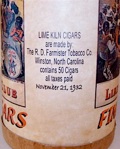


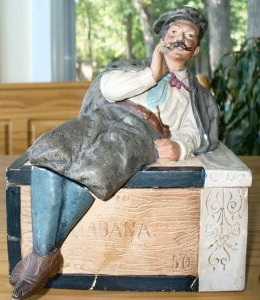
Tobacco cutters aren’t for cutting cigars
to order. They became obsolete after the intro-
duction of cellophane, when manufacturers
began “sanitary wrapping” each ounce of chaw.
More than one million cutters were made in more
than 100 known styles. The ones illustrated are
highly polished and over-restored, a controversial
practice amateurs should never attempt. The imp
upper left was originally colorfully painted.
The most common cutter is the “Star” which
was offered as a coupon premium for 30 years.
This ad shows it slicing a plug.
NOTE: a few tobacco cutters were designed
with a cigar cutter as part of the tool, but it is NOT
the big flat blade used to cut the plug. [13620]
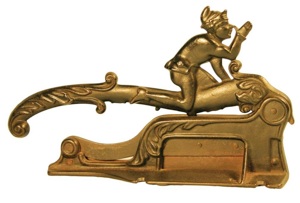
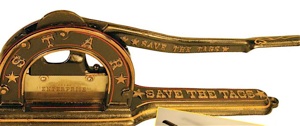
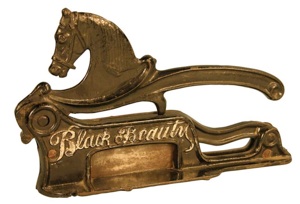
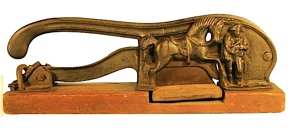
Unusual crock that may be Real...
This mystery crock is 6” across, 4.5” high and unmarked on the bottom. The text refers to one of the top dozen cigar label printers, but what it was used for is not known for certain. Best guess is that it held some sort of glue to paste the labels and other trim onto a cigar box.

Interestingly, one turned up on eBay recently that the seller claims has an
1892 date on it, which presumably ties it to the Columbian Expo.
I’m still in the “Prove something to me” camp. I don’t know. [10449]

Unreal King Edward belt buckle
Want a heavy metal belt buckle? This may do.
Want a cigar collectible from the Swisher Cigar Co. and their famous nickel smoke? Stay away. This is as fake as the “Tiffany” and “Wells-Fargo” buckles that have flooded the market in recent decades.
This is not old, not cigar, not advertising.
It’s a modern belt buckle.

This exhibit highlights various items offered for sale on ebay that you would be wise to be very careful of. Included are two kinds of items: real and unreal.
Real items are those that are old and originally created by the cigar or tobacco industry, but often incorrectly named or described on ebay.
Unreal items are modern attempts to deceive.
eBay Fakes & Mistakes
Buyers Beware.
A National Cigar History Museum Expose
© Tony Hyman, all rights reserved.
Last modified: October, 21, 2014
Real and Unreal tobacco humidors look like cigar boxes
LEFT: 19th century porcelain: note the delicacy of color typical of a 19th century humidor box.
RIGHT: Gaudily painted modern cast iron reproduction sells for $20 - $40 if you want one.
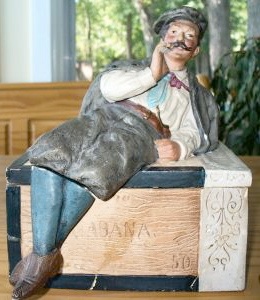
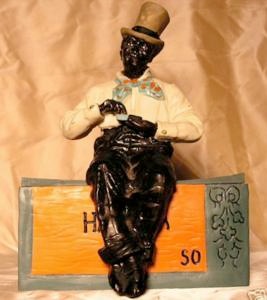
Unreal or a rule breaker?
I stayed away all three times it’s been offered on ebay.

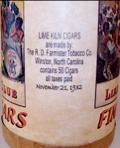
Real AND Unreal cigar jars
Real ones exist, but are very rare. Most of them you will find, like this, are marriages of old glass cigar jars and a cigar box end label, slapped together by a greedy dealer hoping to get rid of two items he or she was having a hard time selling. The jar is real; the label is real; it’s the marriage that’s fraudulent. Provenance means nothing as the jar seen here, like many others, was sold to a less than knowledgeable collector by a big-name auction house.
It’s easy to tell the Real from the Unreal. A Real cigar jar should have 3 and possibly 4 pieces of paper glued on: a label, a caution notice, a tax stamp and, if after WWI, a tax class notice. This jar like nearly all fakes has only a label. It’s true that jars before WWI don’t have tax classes, and yes, it’s possible that a tax stamp might have been applied with a different glue and come off or been washed off without a trace remaining...but if there’s an advertising label there better be a Caution Notice. Jars don’t realistically survive with one and not the other. A glass cigar jar with a label and no Caution Notice is almost certainly a marriage. If there is a Notice, check its authenticity: match the factory, state and tax district printed on the Notice with what’s embossed on the bottom of the jar; THEY MUST AGREE. A faker can glue any old left-over Notice onto the jar, but If they don’t match, odds are 99% it’s a fake. Why buy a fake?
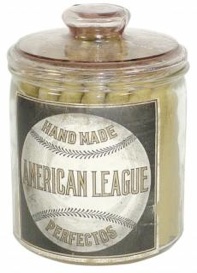
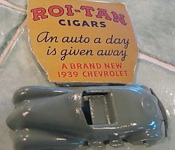

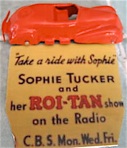
Paperweights: real paperweights but not old & not advertising
If you’re an ebay shopper, beware of $20 ashtrays or paper-weights that look like this, but with a variety of images inside. The images may be real and old (or they may be photocopies, which would be difficult to detect) but the glass part is new. The marriage of the two is even newer, performed by some recent entrepreneur hoping to catch the unwary. The ads are worded carefully, with no claims of being old, but the implication is there. Nowhere are they identified as new.
These four are among many seen on ebay, usually offered as a “Buy it Now” for around $25. John is a very common cardboard 10 pack from Belgium that’s been offered for sale on ebay close to 100 times. Yellow cab is a common end label from the 30’s. Perfecto Garcia is a top oval or nail tag from the 1950’s. The O.L. Schwencke looks as if it might be a business card. I don’t know. Others exist. Keep your eyes open and your money in your pocket unless this sort of thing appeals to you.

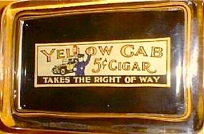


Change trays, a warning: really old or not?
Watch out on eBay for these alleged “change trays.” They look like brand new creations designed to catch the unwary beginning collector who doesn’t know better than to buy them.
If you want them as “decorator items” you have the right to spend your money as you wish. But don’t buy them as investment unless you are positive they’re old.
I got a nasty foul-mouthed letter from a John A. who says these are really old and not fake and called me all sorts of names for being suspicious. He’s seen scratches on the Dante which proves it’s old and real, he claims, as if someone capable of making one isn’t capable of scratching it. He does not explain the total lack of wear on the bottom of either as seen on the eBay pix.
Despite John’s curse-decorated claim, I remain suspicious of any new-to-the-market-since-1980 fine condition item based on popular widely available cigar label images. Things too good to be true rarely are. With so many great things available, why take a chance?
Potty-mouthed-racist John (I won’t repeat what he called our President) says they would be too hard to duplicate, so they must be real. That’s a good argument. Maybe they ARE real. Like I said above, buy them if you want one, but keep your eyes open and expectations low. Maybe Mr. A. is right or maybe he’s the one trying to peddle them on eBay.


The person who sold the car (above left) on ebay admitted it had been repainted and that the sign was a reproduction. Will the next owner be as honest? The person who offered to sell the red convertible
(above center) wasn’t.

This desirable auto-sign combination appeared as part of a 1939 essay contest in which American Cigar gave away a new Chevrolet every day. Everyone who entered the contest got a little one-inch charm bracelet car (frequently seen on ebay). The above two cars on the left are the only convertibles I’ve seen allegedly associated with that campaign, and I’m suspicious of their origin. The only mini-autos I’m confident were really displayed as part of the campaign look like the car above right. If you are offered one of these sets that doesn’t look like the above right, buyer beware.
Homestead Cigars sign ... a fake?
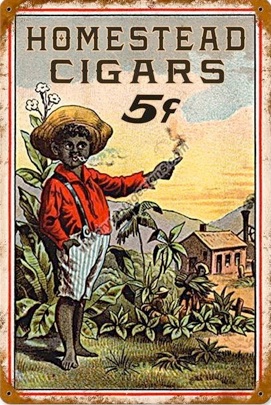
Good question. The answer is yes. It’s obvious that it is a sign, but it’s not old and the last Homestead cigar was sold a half century before this sign appeared on the collectibles market.
I see four problems that would prevent me from buying this. [1] it’s condition is too suspiciously perfect; [2] the “rust” around the edges has been helped by what looks like a wire-brush on a power drill and kept carefully off the image; [3] corner grommets (a modern innovation) and [4] there are too many of them being offered for sale.
It’s no more than a few years old (post 1980) and was designed to hang in your rec-room. Buyers beware, unless you’re looking for a somewhat tacky modern sign.
John A who didn’t like my questioning the authenticity of the change trays cursed me again, not liking what I said about the amateurishly faked rust and the grommets (the truth of what I said not withstanding). I’ve seen thousands of signs, but never an old one (pre WWII) with grommets.
My misanthropic letter writer insulted me for not choosing to talk about the lithography, even tho my comments would be based on a small poor web photo. C’mon man, gimme a break.
